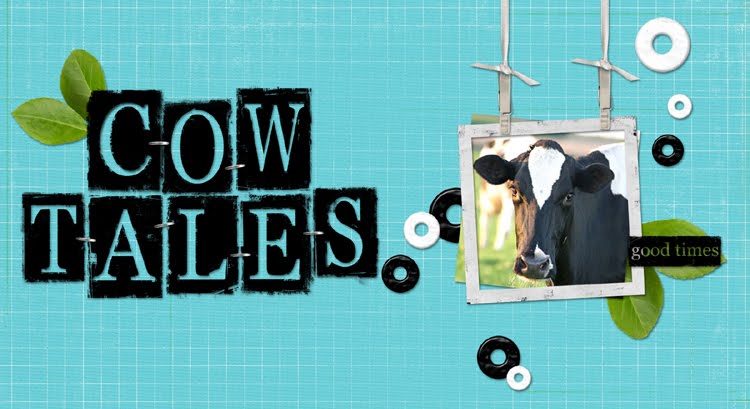A milking cow has a water consumption requirement between
20-40 gallons per day with higher needs under heat stress conditions. A 1500-pound non-lactating dairy cow requires
at least 9 gallons of fluids daily for maintenance. Lactation and heat stress increase fluid
demand, an additional 11 to 31 gallons above maintenance. Now let’s add a severe insult to the system. Diarrhea has the potential to cause over 27
gallons in fluid losses daily in a 1500 pound cow. So what can we do on farm to correct the
fluid losses?
First, we must learn to assess the degree of dehydration
using the cow’s eyes, skin tent, mucous membranes. By classifying the degree of dehydration, we
can tailor a hydration protocol for the individual cow.
- 6-8% Dehydrated: Slightly sunken eyes, Slightly increased skin tent
(2-3sec), Moist mucous membranes
- 8-10% Dehydrated: Obvious sunken eyes, Obvious increased skin tent (3-6sec), Tacky mucous membranes
- 10-12% Dehydrated: Profound sunken eyes, Skin Tent >3 seconds duration, Dry mucous membranes, Rapid Heart rate, Cold Extremeties, Very dark urine, Depression
Hydrating the cow orally, through a pump system, is the
easiest means of rehydrating the cow on-farm, giving the cow the most vital
nutrient - water. The rumen in an adult
cow can easily accommodate 10 gallons of fluid. To place the 10 gallons of drench into your
cow, you can never go wrong using the Magrath Cattle Pump System. Studies have shown that most off-feed cows
are alkalotic, not acidotic, so it is critical that you select an oral solution
that is non-alkalizing. If they are
alkalotic, why do so many off-feed cows get those alkalizing pink pills? Hmmmm, something to talk about with your
vet! A simple non-alkalinizing oral
solution would include 140g NaCl, 25g KCl, and 10g CaCl2 in 5 gallons of
water. Pre-formulated and packaged
drench mixes can also be utilized such as Advanced Agri-Solutions Oral Drench
Mix which contains ingredients that address subclinical hypocalcemia, stimulate
rumen microbial growth, and provide energy precursors for the ketotic cow.
For cows between 6-7% dehydrated, oral rehydration will meet
the cow’s fluid deficit. Cows that are
6% dehydrated need 11 gallons and individuals 7% dehydrated require 12 gallons
for fluid replacement. Remember to
thoroughly mix the solution/drench mix in warm water, the same temperature as
the cow, 101.5F. Make sure the hose is
in the esophagus before pumping. Just
like tube feeding a calf, you will not be able to easily palpate the hose in
the hard, cartilaginous trachea. Do not
allow the cow to raise her head in order to prevent her from inhaling
regurgitated drench mix or saliva. Take
your time and pump slowly to prevent regurgitation, especially with jerseys. Avoid pumping the bloated cow or a cow with a
grossly distended abdomen and instead rely on IV rehydration strategies.
Cow’s that are greater than or equal to 8% dehydrated need
IV therapy in addition to oral rehydration.
To correct fluid deficit, a cow 8% dehydrated requires 14 gallons of
fluids. So, if we can squeeze 12 gallons
into the rumen, a deficit of 2 gallons still remains. At ~4 Liters per gallon, the cow requires 8 L
administered intravenously! Your head
starts turning when you consider higher dehydration levels. In addition to 12 gallons in the rumen,
dehydration statuses of 9%, 10%, 11%, and 12% require 16L, 24L, 32L, and 40L of
IV fluids!
Let’s start with Hypertonic Saline 7.2%. Hypertonic saline rapidly expands the
vascular fluid volume by pulling fluid from the non-vascular space, like the
large rumen water reservoir and tissues, into the blood vessels or vascular
space. Hypertonic saline is easier to
administer than larger volumes of IV fluids.
After heating to 101.5°F, administer 2L through a 14g needle in the
jugular vein over 8-10 minutes. Repeat
once in 24 hours. After the IV, cows
typically drink 8-10L of water. Remember
cows prefer warm water. However, if no
water is consumed, pump the cow immediately.
Cows within the 10-12% dehydration range will require more
than just hypertonic saline and pumping to correct their fluid deficit. Large volume IV fluid therapy is necessary.
Remember most cows are alkalotic, so a non-alkalizing IV solution is required
such as Normal Saline or Ringer’s Solution and avoid alkalizing solutions like
sodium bicarbonate solution and lactated ringers. Normal saline and ringer’s solution can also
be administered safely under the skin over multiple sites. Just remember, to warm all fluids, no matter
the route of administration (IV, under skin, or orally) to the cow’s body
temperature. Do not exceed 10-12L/hour
intravenously. The probability for
survival greatly improves with rapid administration of large volumes (10-20L)
of IV fluids. Surgical outcomes also
improve with IV fluid therapy before, during, and after surgery, helping to
restore blood flow to compromised tissue.
How much patience do you have?
To save a cow, you can discover some patience. Repeat fluid therapy to correct ongoing fluid
loss and to cover maintenance requirements (9 gallons) and milk production (22
pounds of milk equals 2.6 gallons water for example) if the cow fails to drink
sufficient fluids. Many off feed cows
and particularly toxic cows require calcium, 250-500 ml 23% calcium
gluconate.
If you can pump a cow and place a needle into the jugular
vein you can correct hydration, save cows, and hasten recovery from
disease. Never fail to consult your
veterinarian to tailor rehydration strategies to your farm.


This comment has been removed by a blog administrator.
ReplyDelete